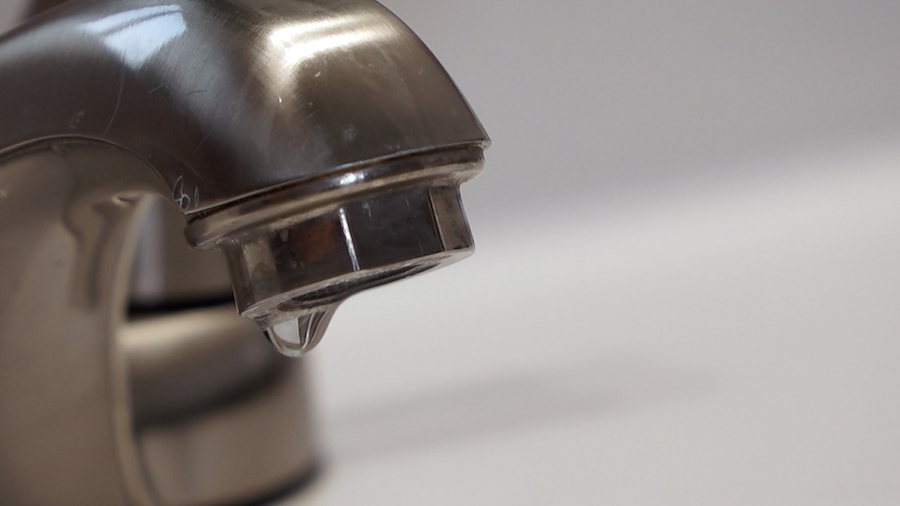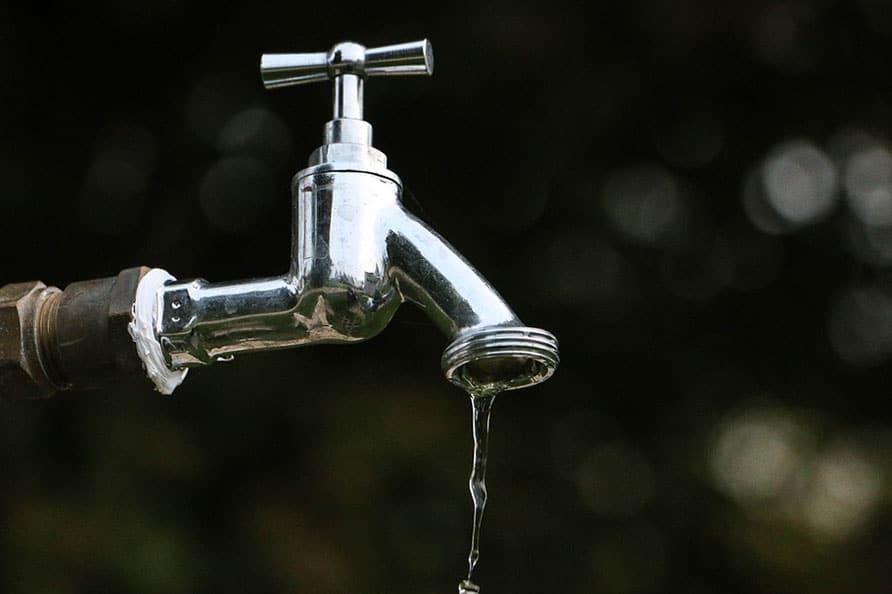Uncovering the Consequences of a Damaged Faucet
Uncovering the Consequences of a Damaged Faucet
Blog Article
This great article down the page pertaining to The Environmental Impact of Leaky Faucets is quite entertaining. Don't overlook it.

Intro
A leaky tap might seem like a small inconvenience, but its repercussions prolong much beyond the periodic drip. Recognizing the impacts of a dripping faucet is critical for both house owners and the setting. In this short article, we'll explore the different influences of this usual house problem and why addressing it without delay is important.
Reasons For Leaky Faucets
Leaking faucets can result from a variety of variables, consisting of wear and tear, high water stress, and deterioration. With time, the continuous use faucets can bring about damaged seals and gaskets, triggering leaks to establish. Furthermore, extreme water pressure can put strain on plumbing components, bring about leakages. Corrosion and corrosion can additionally compromise tap parts, making them vulnerable to leak.
Water Wastage
One of the most significant consequences of a leaky faucet is water waste. Even a tiny drip can add up to gallons of drainage over time. This not just drives up water bills but also adds to water scarcity and environmental degradation. Resolving dripping taps quickly is crucial for conserving this priceless source and decreasing its effect on the planet.
Financial Influence
Along with wasting water, dripping taps can additionally have a substantial economic influence. Boosted water expenses are a direct consequence of water wastefulness, setting you back house owners numerous dollars each year. In addition, the cost of fixing water damages caused by leakages can be substantial, specifically if left neglected for a prolonged duration.
Environmental Influence
The environmental effect of dripping taps extends beyond water waste. By preserving water, homeowners can contribute to wider efforts to reduce water shortage and secure all-natural ecological communities. Lasting choices such as rain harvesting and water-efficient components can better lower the ecological footprint of home water usage.
Technical Solutions
Innovations in modern technology have led to the growth of wise faucets and water-saving devices that aid lessen water wastage. Smart taps utilize sensors to identify activity and adjust water flow appropriately, lowering waste without sacrificing convenience. Water-saving gadgets such as aerators and low-flow showerheads are likewise reliable in preserving water without endangering efficiency.
International Viewpoints
While dripping taps might appear like a local problem, they contribute to wider global obstacles such as water deficiency and climate change. In regions currently dealing with water tension, every drop counts, making leakage avoidance and repair work important. By taking on water-saving methods and investing in lasting technologies, homeowners can play their part in resolving these pressing international problems.
Regulatory Measures
Federal government regulations play a critical function in reducing the impact of dripping faucets and advertising water preservation. From developing codes that call for water-efficient components to water-saving incentives and refunds, policymakers have a series of devices at their disposal. By implementing and imposing these guidelines, federal governments can make certain that homeowners prioritize water conservation in their lives.
Neighborhood Impact
Attending to leaking faucets requires collective initiatives at the community level. By raising recognition concerning the importance of water preservation and giving sources for leak discovery and repair service, regional authorities can empower homeowners to do something about it. Efforts such as water-saving discount programs and leakage detection projects can incentivize habits change and promote liable water usage.
Instance Studies
Real-life instances of the influence of leaky taps highlight the relevance of proactive maintenance and prompt repairs. From water damage to increasing water costs, the repercussions of neglecting leakages can be extreme. By sharing these case studies, property owners can better comprehend the relevance of resolving dripping taps without delay.
Educational Campaigns
Educational projects play a critical duty in elevating recognition regarding the impacts of leaky taps and advertising water conservation practices. Via workshops, workshops, and on the internet sources, home owners can discover how to identify and fix leaks themselves. By encouraging individuals with expertise and tools, instructional campaigns can promote a society of responsible water use within communities.
Health and wellness Concerns
Leaking taps can create favorable settings for mold and mildew growth, positioning health and wellness risks to owners. The presence of mold and mildew can worsen breathing concerns and allergic reactions, especially in prone people. In addition, water damage resulting from leaks can jeopardize the structural stability of buildings and result in expensive repair services.
Do it yourself vs. Expert Repair work
When faced with a dripping tap, home owners commonly dispute whether to attempt fixings themselves or work with an expert plumber. While do it yourself repair services can save cash, they may not constantly deal with the hidden problem properly. Expert plumbings have the proficiency and devices to detect and repair leakages correctly, making sure long-term services and comfort for homeowners.
Preventive Measures
Stopping dripping taps needs routine upkeep and aggressive actions. Straightforward jobs such as changing damaged washers and seals can prevent leaks from developing. In addition, updating to high-grade components and lowering water pressure can aid prolong the lifespan of taps and reduce the risk of leakages.
Final thought
In conclusion, the results of a leaking faucet expand far beyond the occasional drip. From water wastage and raised water expenses to wellness worries and ecological effect, the effects of neglecting leakages can be significant. By resolving leaky taps quickly and embracing water-saving techniques, home owners can mitigate these impacts and add to an extra lasting future.
Why You Shouldn’t Ignore a Leaky Faucet in Your Home
What Causes a Leaky Faucet?
Various factors can cause a leak, from loose and worn-out parts to corrosion. Your faucet has four essential components from which most plumbing issues will stem: the O-ring, the valve seat, the washer and the gasket.
What Is an O-Ring?
The O-ring is a stem screw that fastens parts of the faucet in place, preventing water from leaking out of the spout. Depending on your faucet type, the stem might have multiple O-rings. Water will drip from the faucet’s handles and base if this part breaks or deteriorates.
What Is a Valve Seat?
The valve seat controls the flow and temperature of the water. Found at the base of the handle, it works as a seal for the faucet’s stem. The valve seat ensures the water is allowed to flow or is blocked as the handles dictate. You’ll know it’s malfunctioning when water leaks from your faucet’s sides.
What Is a Gasket?
The gasket is found between the water inlet and the valve stem. It creates a seal between the faucet and the sink, holding its joints by aerators attached to the stem’s head. Water will trickle out from the base if the gasket isn’t working.
What Is a Washer?
The washer secures the handles and prevents leakage, serving a similar purpose to the O-ring. While the O-ring is ordinarily round and made from an elastic material, such as rubber, the washer is square-shaped and composed of brass, copper and other hard metals. If it malfunctions, corrodes or has been improperly installed, water will leak out of the handles, causing that incessant faucet drip.
Why Is a Leaky Faucet Dangerous?
A leaky faucet left alone for too long can have significant consequences.
Pest Infestations
Since bugs and rodents gravitate towards the scent of water, a leaky faucet will draw pests to your sink. Both are looking for leaks accessible through crawl spaces, which a faucet provides. If you leave water dripping for too long, you run the risk of an infestation.
Rust
If one of the faucet parts has started to corrode, the resulting rust can spread to your pipes and valves with startling speed. The rust might even lead to cracks or other impairments, resulting in more severe plumbing issues.
Your sink could also sustain damage from a leaky faucet. The water in your tap possesses sparse elements of calcium and iron that can stain your sink with repeated and prolonged exposure. Once those elements in the water have been open to the air for some time, your sink will start to rust, creating marks that can be difficult to remove.
https://www.tomsmechanical.com/blog/why-you-shouldnt-ignore-a-leaky-faucet-in-your-home

I found that blog entry on Potential Health Risks Associated With Leaky Faucets while doing a lookup on the internet. Appreciated our blog entry? Please quickly share it. Help somebody else find it. Thanks a bunch for your time. Please check up our blog back soon.
Report this page